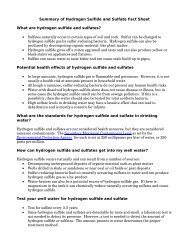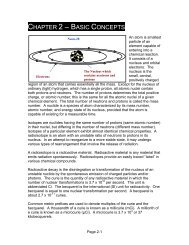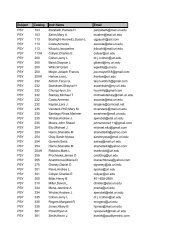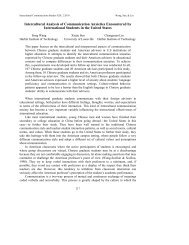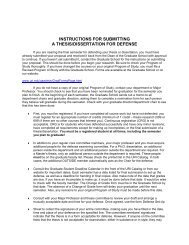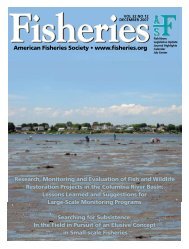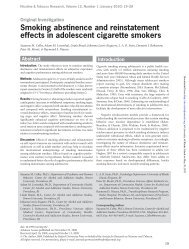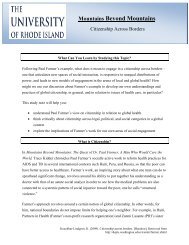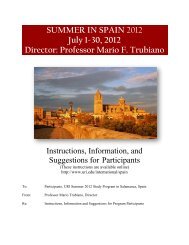Appendix A Standard Operating Procedures - University of Rhode ...
Appendix A Standard Operating Procedures - University of Rhode ...
Appendix A Standard Operating Procedures - University of Rhode ...
You also want an ePaper? Increase the reach of your titles
YUMPU automatically turns print PDFs into web optimized ePapers that Google loves.
7. Set the STE timer to the correct sterilization period. If the autoclave is cold set it for 55<br />
minutes, if the autoclave is warm set for 45 minutes. Check on the unit after about 20 or<br />
25 minutes to be sure that it is reaching the correct temperature / pressure. Small bursts<br />
<strong>of</strong> steam may be evident from the water reservoir during the run; this is normal and<br />
necessary. Record the unit pressure on the Autoclave Use log. It is necessary to record<br />
the maximum pressure while the unit is running because the maximum pressure needle<br />
is broken (as <strong>of</strong> 2008).<br />
8. When the timer reaches 0, the run is complete.<br />
9. Turn the multi-purpose knob to EXH + DRY.<br />
10. When the pressure gauge reads 0, turn the main switch to STOP, and the multi-purpose<br />
switch to 0.<br />
11. Carefully open the door – steam will escape so do not put any body parts near the edge<br />
<strong>of</strong> the door while opening it.<br />
12. Allow to cool or remove the load immediately. Be sure to use insulated gloves when<br />
handling the tray. It will be hot!<br />
13. Record the temperature on the maximum temperature recording thermometer and the<br />
run time on the autoclave run log (attached below). If the temperature on the recording<br />
thermometer does not read at least 121 °C contact Elizabeth Herron.<br />
14. Unplug the unit if you are not running any more loads immediately.<br />
15. Do not tighten bottle caps until the bottles are cooled to room temperature or they will<br />
warp.<br />
16. Place a “STERILE” label over the cap so it connects to the bottle shoulder to indicate<br />
that the bottle has been sterilized.<br />
3.3 Using Autoclave in the Basement <strong>of</strong> Woodward Hall.<br />
1. Seal the door by pressing the button; wait for SEALED DOOR light to come on.<br />
2. Set EXPOSURE TIME for 20 minutes.<br />
3. Set EXHAUST TIME for 5 minutes.<br />
4. Select WRAPPED setting (temperature should be set for 121 C).<br />
5. Press START.<br />
6. The autoclave will print out a record <strong>of</strong> the sterilizing event. Write your initials, item<br />
being sterilized, room number and phone extension on the tape (so that you can be<br />
contacted in case there is a problem).<br />
7. The cycle will take about ½ hour to complete. You will be unable to open the door<br />
unless the autoclave has cooled to a safe temperature. Be sure to use insulated gloves<br />
when handling the tray. It will be hot!<br />
8. Once the bottles are cool to the touch, tighten the lids and put a “STERILE” label from<br />
the cap to the shoulder <strong>of</strong> the bottle (in effect sealing it).<br />
2 <strong>of</strong> 3<br />
Bottle Autoclaving Procedure SOP 005<br />
S:\WW\awwword\LABPROC\all QAPPs\LABQAPPs\QAPP Rev5 -0609\SOPs\SOP 005 BottleAutocalve.doc



